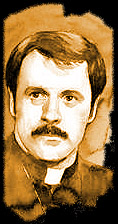By
The United States has 5 percent of the world’s population, but 25 percent of the world’s prisoners – and clear evidence of a wrongful conviction problem.
 No one can watch the Oscar-winning 1993 film, “The Fugitive,” starring Harrison Ford and Tommy Lee Jones, without rooting for Dr. Richard Kimball. We empathize with this skilled surgeon who lost everything while on the lam from “justice.” Falsely accused and wrongfully convicted of the murder of his wife, he finally won the most grueling of battles. He managed to prove his innocence by unraveling the mystery of the one-armed man who really committed the crime. In essence, he conducted the investigation the police didn’t while at the same time evading the dogged pursuit of Tommy Lee Jones’ Marshall Sam Gerard and his crack team of dogged pursuers.
No one can watch the Oscar-winning 1993 film, “The Fugitive,” starring Harrison Ford and Tommy Lee Jones, without rooting for Dr. Richard Kimball. We empathize with this skilled surgeon who lost everything while on the lam from “justice.” Falsely accused and wrongfully convicted of the murder of his wife, he finally won the most grueling of battles. He managed to prove his innocence by unraveling the mystery of the one-armed man who really committed the crime. In essence, he conducted the investigation the police didn’t while at the same time evading the dogged pursuit of Tommy Lee Jones’ Marshall Sam Gerard and his crack team of dogged pursuers.Who could forget Richard Kimball cornered by Sam Gerard at the precipice of that immense dam outside Chicago? Before jumping a hundred feet into its turbulent falls, Dr. Kimball desperately pleaded, “I didn’t kill my wife!” to which Sam Gerard responded in exasperation, “I don’t care!” In the end, however, it turned out that he did care, though it wasn’t in his job description. The Marshal’s job was to return to prison a man whom a judge and jury had declared to be guilty, though we all knew that he was not. As Marshal Sam Gerard delved deeper into the case, however, he was transformed before our eyes from The Fugitive’s adversary into his advocate...
In September, Robert Wilcoxson, age 32, and Kenneth Kagonyera, 31, both walked as free men out the gates of a Texas prison after serving over a decade behind bars for a crime they had nothing to do with. It turned out that the man who really committed the crime – a man Robert and Kenneth didn’t even know – confessed to it after DNA evidence was finally tested and showed him to be the perpetrator of the crime...
A problem for this newest exoneration case is that Robert Wilcoxson and Kenneth Kagonyera had also pleaded guilty to the crime for which they were later exonerated. How can such a thing happen? I have come to know the answer to this, but first it needs some context. It’s an important context – to me, at least – since it applies to my charges and imprisonment as well. It’s a context that I described in “The High Cost of Innocence,” and one you would not readily see in any episode of “Law & Order.”
The context is this: the American justice system works in favor of the man who stands before it guilty of the crimes charged. The vast majority of criminal cases end with a “plea deal” and not a conviction following a jury trial. The real Catch-22 is that guilty people can often negotiate for lighter sentences in exchange for sparing the state the time and expense of a trial.
Innocent men, on the other hand, feel compelled to preserve their Constitutional rights to a fair trial and a presumption of innocence. But innocent defendants also expect the justice system to work so they risk a vastly inflated prison sentence if it fails them, as it sometimes does... (continued)
Link:
Related:
- Fr. Gordon MacRae: Federal Court to Hear Oral Arguments in Habeas Corpus Appeal
- A Touch of Deja Vu: The Case against Rev. Gordon MacRae - by Ryan A. MacDonald
- Trial by Therapists - by Ryan A. MacDonald
- To Azazel: Father Gordon MacRae and the Gospel of Mercy - by Ryan A. MacDonald
- A Priest and His Wounds: Padre Pio Under Investigation
- SNAP Judgments Part II: Ground Zero of the Catholic Scandal
- SNAP Judgements Part I: Catholic Priests Among the Public Ruins - by Fr. Gordon MacRae
- As The Year of the Priest Ends, Are Civil Liberties for Priests Intact?
- Dr. Bill Donohue Discussing Fr. Gordon MacRae and SNAP on EWTN's The World Over
- SNAP EXPOSED: Unmasking the Survivors Network of those Abused by Priests - by William A. Donohue, Ph.D.
